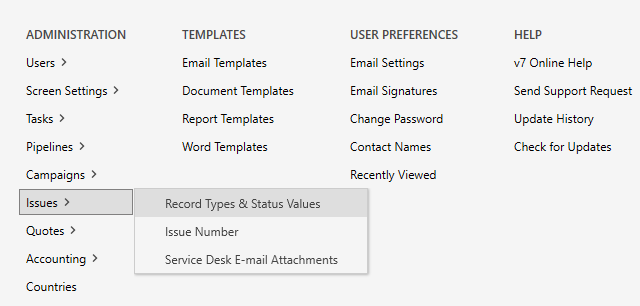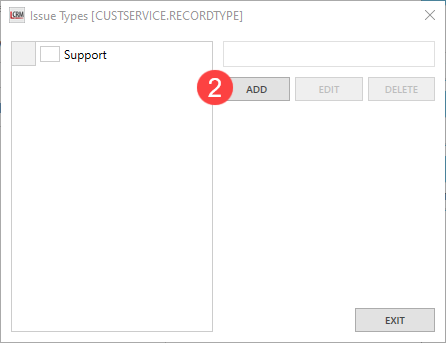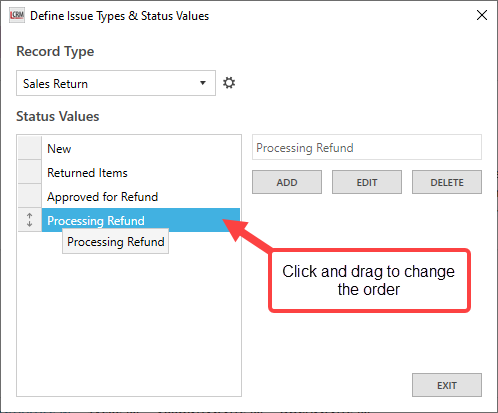Ticket types make it easy to sort customer issues into categories. For example, your business may deal with general support queries, sales returns or warranty claims. For each ticket type, you can define a series of statuses. For example, the status values for a general support ticket includes:
- New: Tickets that require action.
- In Progress: The agent is working to resolve the ticket.
- Awaiting Response: The agent requires additional information or a response from the customer.
- On Hold: The agent requires additional information from a third party to resolve the ticket.
On the other hand, the status values for a warranty claim may include additional steps that involve the return of goods, an inspection of the returned goods, and refund approval by a manager.
NOTE: Ticket management can become more complex if you define more ticket types and statuses. We recommend you start with one ticket type and introduce additional types and status values when needed.
Define ticket types
Go to the administration settings and select Issues > Record Types & Status Values.

Click on the settings icon to define a new ticket type.

Click ‘Add’ to create a new ticket type.
Enter the ticket type’s name and click ‘SAVE’.


Define ticket status values
In the main configuration screen, use the drop-down to select a ticket type and click ‘ADD’.
Enter a name for the ticket status and click ‘SAVE’. Repeat the process to define as many status values as required.


To change the order, click and drag the status values up or down.

